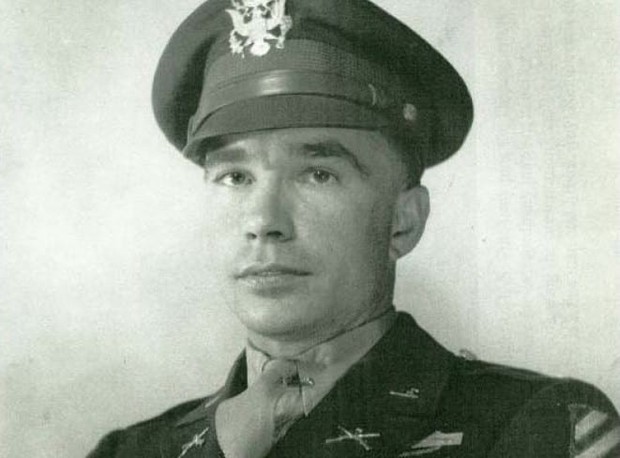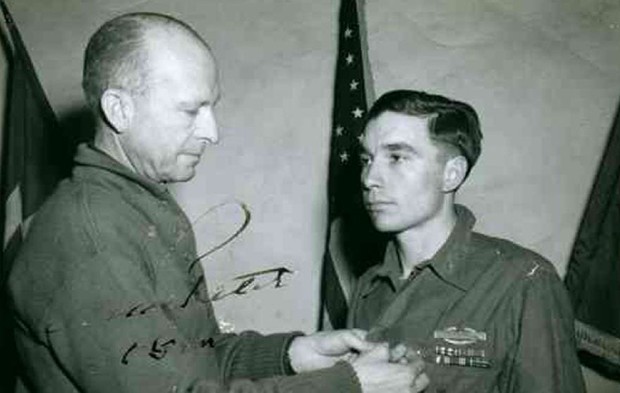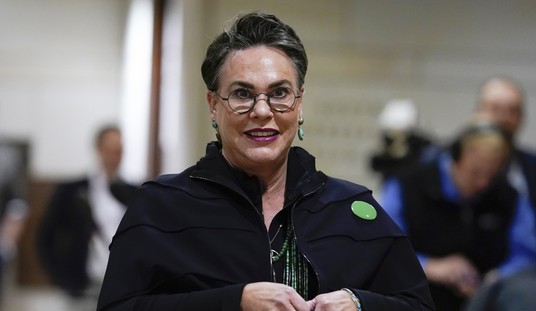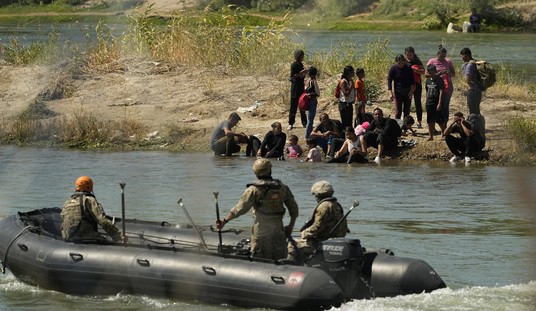
March 25 was National Medal of Honor Day. And on that day, 88-year-old Lyda Pauline Conner received a very special phone call. President Trump called her to tell her that her deceased husband, Garlin Murl Conner, will receive the Medal of Honor for his actions nearly three-quarters of a century earlier.
Conner was born in 1919, and in March 1941 he was swept up in the pre-World War II peacetime draft that began in November 1940 (I’m using November because that is when the first men were actually inducted). He was assigned to the Cottonbalers of 3d Battalion, 7th Infantry of the Third Infantry Division (Rock of the Marne).
Conner was part of the Operation Torch landings in North Africa, the Operation Husky landings in Sicily, Operation Shingle landings at Anzio, and the invasion of Southern France called Operation Dragoon. By 1945, Private Conner was First Lieutenant Conner and had won four Silver Stars, four Bronze Stars, and seven Purple Hearts in 28 months of combat service (the next time someone talks about bomber crews having to fly 20 missions to be rotated home, keep in mind that infantrymen didn’t rotate home, they were there for the duration). This is what is known in the vernacular as a stud. His number of awards for heroism rivaled that of his Third Infantry Division colleague, Audie Murphy.
His big day, though, was January 24, 1945:
On Jan. 24, 1945, while recovering from a battlefield wound near Houssen, France, Conner ran away from his field hospital to rejoin his unit, and thereafter, single-handedly held off the advance of six German tanks and 600 German infantrymen. Unrolling a spool of wire so he could use a a field telephone, he directed artillery to fall onto his own position, killing 50 enemy soldiers and wounding another 100.
“He called for artillery fire upon himself, determined to destroy and smash the Germans even if it cost him his life,” wrote 1st Sgt. Harold J. Miller in an eyewitness statement.
Conner called in the artillery that knocked out all six tanks, according to the reports they were Panzer Mark VI, aka Tiger, which were pretty fearsome, and he stopped the equivalent of a reinforced German battalion in its tracks. We aren’t told how long Conner kept up his one-man war, but to put it in perspective. A “direct hit” from an artillery piece (before lasers and precision-guided munitions) is +/- 50 meters from where you intended for it to land. To actually put six tanks out of action required a crap-load of artillery to be shot at them.
Conner was recommended for the Medal of Honor at the time but it was downgraded to the Distinguished Service Cross.

Lt. General Alexander M. Patch awards Garlin Murl Conner the Distinguished Service Cross, Feb. 10, 1945 for extraordinary heroism in action.
The battle for recognition continued over the years, even after Conner died in 1998.
The effort to see Conner recognized began when Richard Chilton, a Green Beret from Wisconsin, wrote the Army Board for Correction of Military Records saying that Conner should be honored. While researching the military career of his uncle, Chilton met and talked with Conner before he died. Conner knew Chilton’s uncle. [Chilton’s uncle was killed in action and his involvement started when he reached out to 7th Regiment veterans to try to find out more about his uncle. Read that incredible story here.]
The Army board rejected Conner’s application for the Medal of Honor in 1997 and turned away an appeal in June 2000.
In the years that followed, lawmakers in Kentucky, Tennessee and other states passed resolutions backing the effort to see Conner receive the Medal of Honor. After three eyewitness accounts to Conner’s deeds were obtained in 2006, Pauline Conner resubmitted the case to the board in 2008 —two years after the statute of limitations expired.
In 2014 a federal judge said Pauline Conner had waited too long to present new evidence to the Board of Correction for Military Records. But in 2015, the board went against the advice of its staff and voted unanimously that the evidence “was sufficient to warrant a recommendation” that Conner receive the medal.
Kentucky Sens. Mitch McConnell and Rand Paul sent a letter to Defense Secretary James Mattis supporting the effort to recognize Conner, said Dennis Shepherd, a retired Air Force colonel and attorney with the Kentucky Department of Veterans Affairs.
McConnell attached an amendment to the National Defense Authorization Act of 2018 that cleared the way to legally recognize Conner, Shepherd said.
“It’s been a very long process with a lot of bureaucracy to go through and a lot of boards to go through,” Shepherd said.
President Trump’s call closes the book on this case. The date hasn’t been set yet for Mrs. Conner to receive her husband’s decoration but it is coming.














Join the conversation as a VIP Member